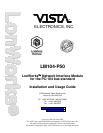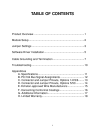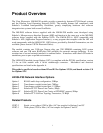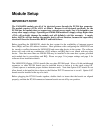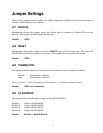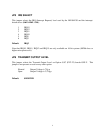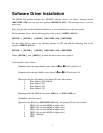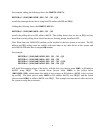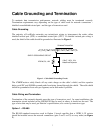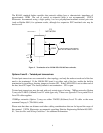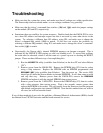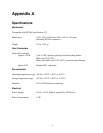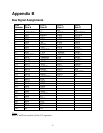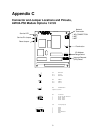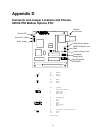6
For example, adding the following line to the CONFIG.SYS file:
DEVICE=C:\LON\LM104INT.SYS /D1 /P1 /Q5
installs the interrupt-driven driver using base I/O address &h1E0 and IRQ5.
Adding the following line to the CONFIG.SYS file:
DEVICE=C:\LON\LM104POL.SYS /D1 /P3
installs the polling driver at I/O address &h310. The polling driver does not use an IRQ, and any
board that uses the polling driver should not have a shorting jumper installed at JP5.
Note: More than one LM104-P50 module can be installed in the host system at one time. The I/O
address and IRQ settings must not conflict with each other or any other device in the system, and
each LM104-P50 must have a unique LON number.
For example:
DEVICE=C:\LON\LM104INT.SYS /D1 /P1 /Q5
DEVICE=C:\LON\LM104POL.SYS /D2 /P2
DEVICE=C:\LON\LM104INT.SYS /D3 /P3 /Q10
DEVICE=C:\LON\LM104INT.SYS /D4 /P4 /Q3
will install four running copies of the driver, with the first copy (device name LON1) at I/O address
&h1E0, using IRQ5. The second driver (device name LON2) is the polled driver
(LM104POL.SYS), which means that while it does occupy an I/O address, &h300, it does not use
up an IRQ. The third (device name LON3) at I/O address &h310, uses IRQ10; and the fourth
(device name LON4) at address &h320, uses IRQ3. This example assumes that no other device in
the system is using these resources.



